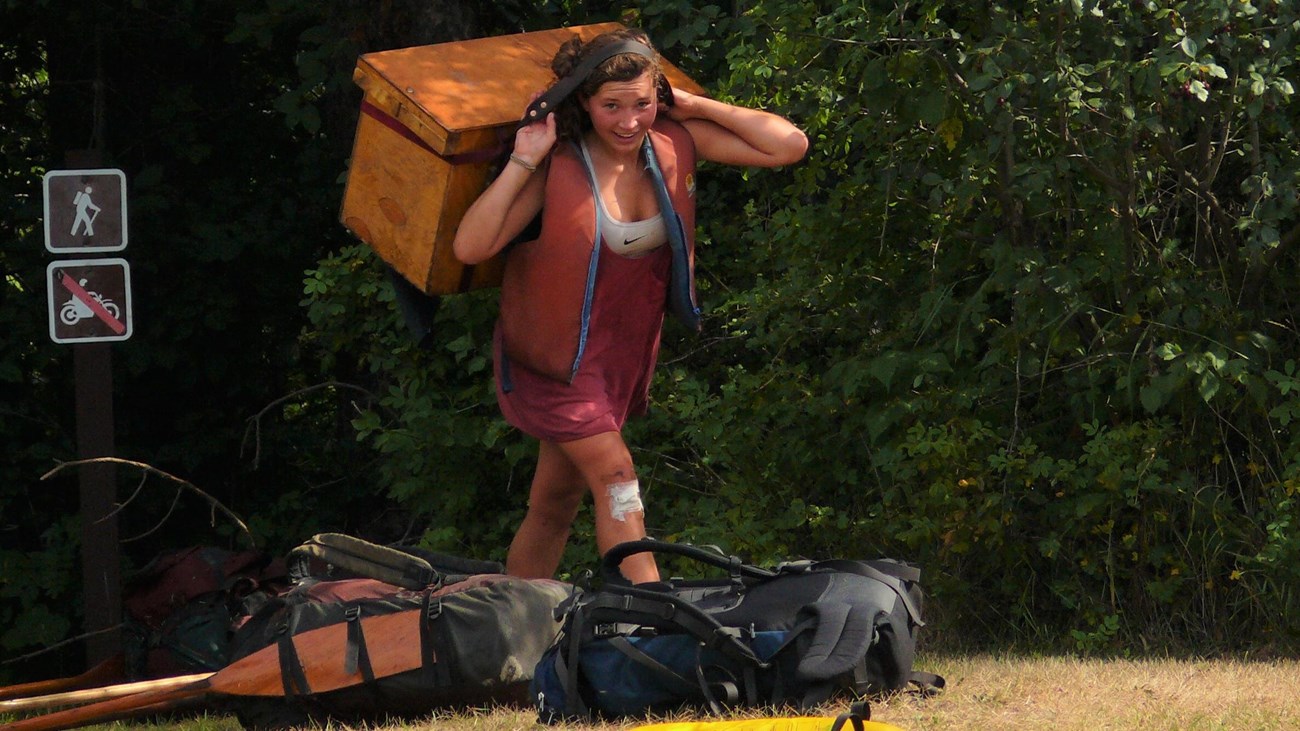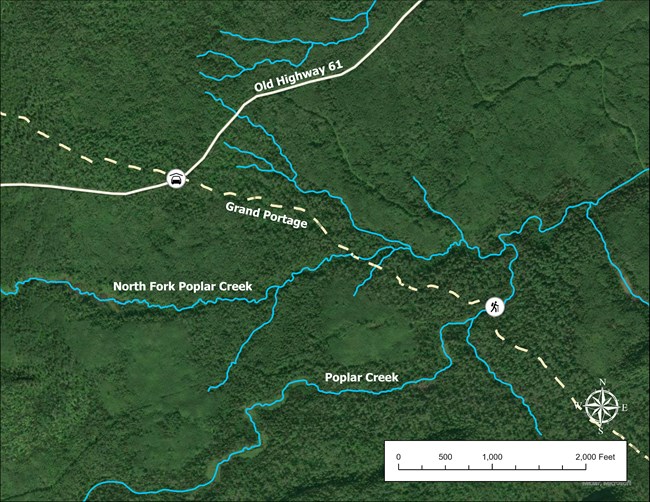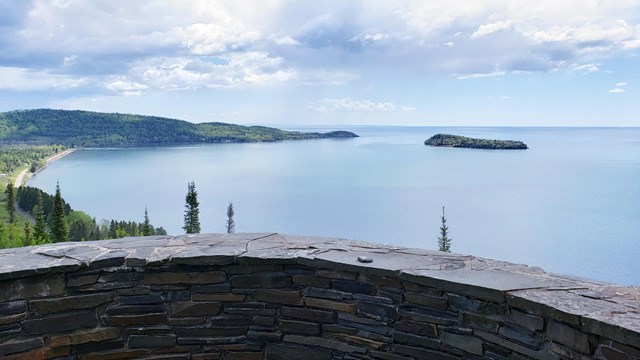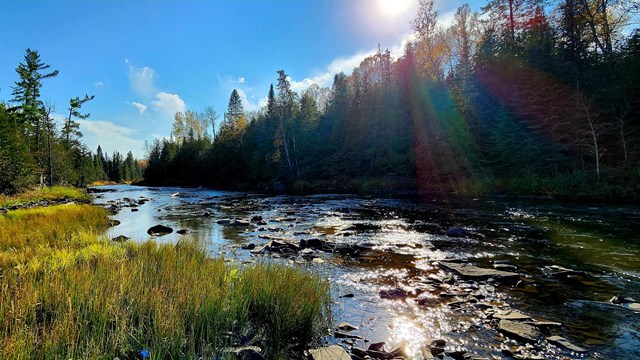Last updated: July 7, 2025
Thing to Do
Hike Grand Portage Trails

NPS photo / S. Layton
Flooding at the Poplar Creek Crossing on the Grand Portage Trail
Increased rain and beaver dam activity can flood the Poplar Creek Crossing along the Grand Portage Trail. Please exercise caution as you pass through the water. (see map below)
Hiking at the Monument
Grand Portage National Monument offers two trails:
the one mile round trip trail to the top of Mount Rose and the 17 mile round trip Grand Portage. Hikers may camp at Fort Charlotte on the Pigeon River by obtaining a free backcountry permit. Fort Charlotte is the only place within Grand Portage National Monument where camping is allowed.
Bicycles are prohibited on the trails at Grand Portage National Monument.
Trail Safety
- Wear sturdy foot wear
- Carry water
- Pack rain gear and/or warm clothing, dress in layers and long sleeves/pants for bug and sun protection
- Remember insect repellent, sunscreen, and a first aid kit
- Know the difficulty level of the trail and your physical abilities and limitations
Leave No Trace!
- Stay on the trail
- Carry out all trash
- Leave what you find
- No fires except in designated fire rings at Fort Charlotte
- Please do not feed or disturb wildlife
Pets
- Pets must be restrained on a leash no longer than 6 feet (1.8 m). Pets are not allowed inside buildings or the stockade of the historic depot. There are trails around the perimeter of the stockade allowing a bypass.
Leashed pets are allowed on trails and not allowed inside the historic depot or inside the Heritage Center. Service animals are allowed in all areas of Grand Portage National Monument.
Grand Portage National Monument is a fee free area.
Both the Mount Rose and Grand Portage trailheads are located across Mile Creek Road from the historic North West Company Depot.
The trails are open year round. Snowshoes are recommended for Mount Rose during winter. Snowshoes or skis are recommended for the Grand Portage when there is significant snow on the trail.
Trails at Grand Portage National Monument are steep and narrow in places with uneven, rocky footing and areas of standing water. They are not wheelchair accessible.

Flooding on the Grand Portage Trail at Poplar Creek.
Increased rain and beaver dam activity this year flooded the Poplar Creek Crossing along the Grand Portage Trail. Please use caution as you pass through the water. Park staff is in the process of determining a drier route.
Map detail of the Grand Portage Trail, showing the location of the Poplar Creek Crossing. North is indicated by an arrow in the lower right corner of the map, next to a scale of 2000 feet.
- The Crossing is marked by a hiker symbol in a white.
- Grand Portage Trail is a white dashed line from the upper left to lower right.
- Old Highway 61 is a solid white line from left to top center, the parking area marked by a car symbol in a white circle
Creeks are blue lines:
- North Fork Poplar Creek is a wavy line from left to right across the center of the map.
- Poplar Creek is from the bottom left to center right.

Hike to the top of Mount Rose for a view of Grand Portage Bay and a bird's eye look at the reconstructed North West Company Depot.

Walk the trail year-round between Lake Superior and the Pigeon River. See the path made famous by the fur trade.
